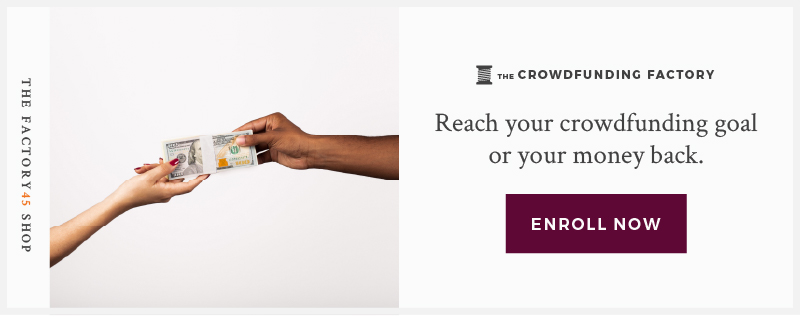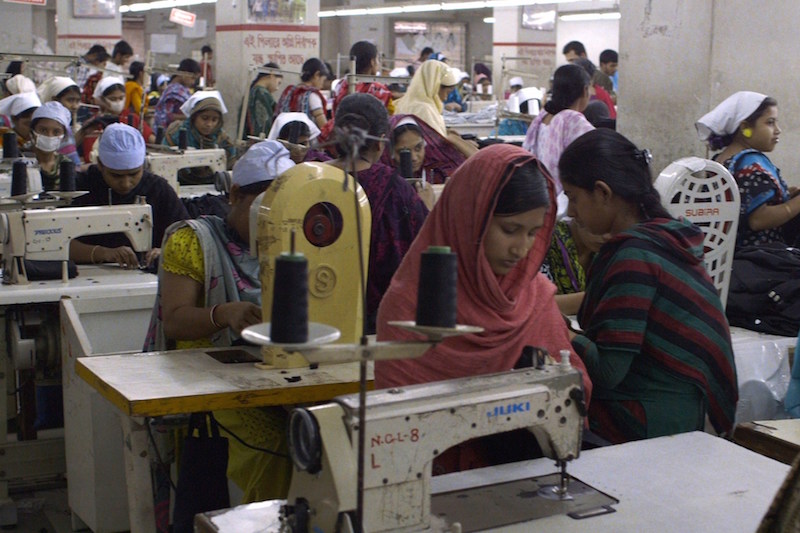“What happened to your first company?”
It’s a question that I’m asked a lot when people read about {r}evolution apparel and what I was working on before Factory45.
Usually the question is posed with slight trepidation — like the person doesn’t want to bring up a sore subject.
The assumption is that the company fizzled out or flopped or just straight-up failed.
But none of those are true, and I think that’s why it’s so hard for people to understand it.
How could we let go of something so good?
Believe me, it wasn’t easy — but if I know anything, it’s that dreams change. (If they didn’t, then I’d be a strung-out lawyer in downtown Manhattan right now.)
So, here it goes — three years later, the truth about why my first company ended.
It was the summer of 2012 and Kristin, my co-founder, and I had just come off the most successful fashion Kickstarter of all time. We had tripled our goal amount to raise over $64K, quadrupling our first production order of our product, the Versalette.
With the extra capital we raised, we convinced each other that it would be a great idea to embark on a “sustainable fashion tour” of the Pacific Northwest. It would help us build brand awareness, tell people about the Versalette, and film mini documentaries with the help of a film intern.
We bought a 1993 Chevy conversion van off of Craig’s List for $5K, decked it out with a new paint job and {r}evolution apparel branding and drove from Kristin’s parents’ house in Missouri to Vancouver, Canada.
Over the course of the summer, we hit up Seattle, Portland, Eugene and San Francisco, interviewing some of our industry “idols” like Lynda Grose, Kate Fletcher and Justin Dillon. We debuted mini documentaries of our travels each week, blogged about it, hosted in-person events and pop-up shops, and even secured a media sponsor.
We spent two months couch surfing, sleeping in the van when we couldn’t find a place to stay, shipping Versalettes out of our trunk, and flying back and forth to North Carolina where our production was ongoing. We secured our first paid speaking engagement and were paid $3K for a 15-minute talk.
By the time August hit, we were so burnt out that we decided to cut the tour two weeks short. I flew home to Boston to see my high school friend get married, Kristin flew back to Boulder and we agreed we would meet back up in a few weeks.
For more than 60 days, Kristin and I had been together for every waking moment. Through the stress of managing two college interns, through the stress of quality control issues with our sew shop, through the stress of hosting event after event (and keeping up with usual business obligations), our business relationship and friendship had been put through the ringer.
And then September rolled around and instead of listening to our intuition — slow down, enjoy the journey, don’t rush the process — we flew back to Portland to redesign the Versalette for a second production run.
We secured $30K in angel investment, finalized the “Versalette 2.0,” found a new production partner that better aligned with our aesthetic and mapped out financial projections into 2017.
“We’re going to be the next Spanx!”
“Are we really going to do this for another five years?”
“We should totally get on The Today Show!”
“Do you think we’re going to be able to sell more of these?”
The emotional rollercoaster of entrepreneurship was a daily mind-warp between, “We can do this!” and “Do we really want to do this?”
It was crazy even to consider letting go of what we had built (as some of our customers later told us).
We had achieved something that most startups only dream about. In our first legitimate year of business, we had surpassed more than $100,000 in sales, and we were profitable. As Kristin has said, that never happens.
We had sold out (almost immediately) of our entire inventory of Versalettes and we had 1,400 new customers who also happened to be our biggest fans.
It was terrifying to walk away from something that we had sunk so much of ourselves into.
But we craved our own identities (at the time, we were known only together as Kristin and Shannon), we craved new projects, we craved new challenges. We started to envision what life would be like on the other side of {r}evolution apparel.
So we said goodbye — knowing that, for both of us, it was more important to part as friends than to stay together as an obligation.
So there you have it: we didn’t go bankrupt or end up hating each other. The dream changed and we decided to listen to our intuition.
Whatever your dream is, I hope you follow it. Great things can happen — things you may not have been able to dream up holding onto the old.





